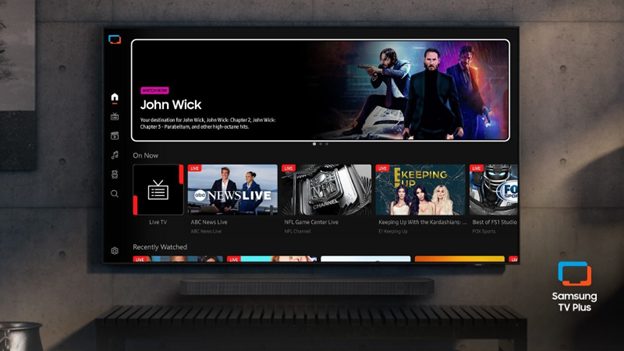In March the FCC released a Notice of Proposed RuleMaking (NPRM) proposing a medical micro-power network service (MMNS) using four 6-MHz wide channels in the 413-457 MHz range [PDF].
Both the Association for Maximum Service Television (MSTV) and the Society of Broadcaster Engineers (SBE) have raised concerns about allowing health-critical devices operating under a secondary service on frequencies used for high power communications.
Broadcasters' concerns are obvious--the proposed spectrum includes the 450-451 MHz and 455-456 MHz bands that are used for remote pickup broadcasts, wireless IFB, broadcast coordination and other broadcast-related activities.
While medical micro-power networks are unlikely to cause interference to these broadcast users, the reverse may not be true. There has been no testing.
Broadcasters aren't alone in their objections. The NTIA, the agency responsible for government operations in this frequency band, including radars, is also concerned. In addition, amateur radio operators are a key part of disaster and emergency communications for many health care facilities. After some fiber cuts in northern California, amateur radio operators were the main link to the outside world for some facilities. The 3/4-meter amateur band falls right in the middle of the MMNS spectrum.
SBE and MSTV are concerned that broadcasters' operations could cause injury to people using MMNS. Broadcasters wouldn't be able to identify where these devices were in use, and the people using MMNS wouldn't know that a news organization's radio car parked along the street could cause them problems if they approach it. If problems arise, it could result in restrictions on the use of any high power communications in the 413-457 MHz band.
SBE and MSTV point to the problems that occurred when DTV broadcasts began on channels that were not used for analog TV service because of the interference potential to other analog stations. The FCC and broadcasters worked together to make sure all medical facilities were in the know before a DTV station began operations or changed power. Unfortunately, this approach won't work with MMNS. A patient using MMNS will have to depend on the ability of the MMNS technology to handle strong co-channel interference. The prevailing concept is that MMNS systems, with the wide frequency range available to them, will be able to change channels to avoid interference.
SBE's comments [PDF] summarized the situation:
"There has been no testing of these devices to date relative to interference susceptibility, or at least no public results have been provided of any testing that has been accomplished. The Commission cannot just slough off the interference potential to patients who demand and deserve in these devices "a high degree of reliability" with mere notices that nearby RF energy may disrupt operation of the devices."
SBE called such a practice "improper spectrum management" and said that it would provide no comfort to any medical patient who had to depend on the devices.
The commentary continued with a call for an out and out ban on the use of MMN in this part of the spectrum:
"Absent any testing showing a high degree of reliability of these devices in the presence of RF energy from unrestricted operation by incumbent licensees in the band in question, MMN operation cannot be allowed at all in the subject bands. MMN operation anywhere in the 413-457 MHz band would have to be conditioned on the ability to withstand and function properly in the presence of all high-power signals normally found in that band. This capability would have to be demonstrated by MMN proponents in advance and until that is done, this proceeding is premature."
The MSTV letter [PDF] is only two pages long, and though not as technical as the SBE filing, it does address broadcasters' concerns:
"The Commission should avoid the potential for interference that could result in potentially life-threatening injury to the individuals that relay on these devices for the functioning of their limbs and organs. Traditional interference coordination efforts will be extremely difficult if not impossible. There is no way to determine the location of individuals with these medical implants. Moreover, it is impossible for an individual with an implant to know whether a device causing interference is nearby. We believe the Commission should weigh carefully the potential danger of using these frequencies for these types of medical implants. MSTV fully understands the importance of this new technology, especially for returning soldiers who have defended our country. We look forward to working with the Commission on this important issue."
The professional video industry's #1 source for news, trends and product and tech information. Sign up below.

Doug Lung is one of America's foremost authorities on broadcast RF technology. As vice president of Broadcast Technology for NBCUniversal Local, H. Douglas Lung leads NBC and Telemundo-owned stations’ RF and transmission affairs, including microwave, radars, satellite uplinks, and FCC technical filings. Beginning his career in 1976 at KSCI in Los Angeles, Lung has nearly 50 years of experience in broadcast television engineering. Beginning in 1985, he led the engineering department for what was to become the Telemundo network and station group, assisting in the design, construction and installation of the company’s broadcast and cable facilities. Other projects include work on the launch of Hawaii’s first UHF TV station, the rollout and testing of the ATSC mobile-handheld standard, and software development related to the incentive auction TV spectrum repack. A longtime columnist for TV Technology, Doug is also a regular contributor to IEEE Broadcast Technology. He is the recipient of the 2023 NAB Television Engineering Award. He also received a Tech Leadership Award from TV Tech publisher Future plc in 2021 and is a member of the IEEE Broadcast Technology Society and the Society of Broadcast Engineers.
